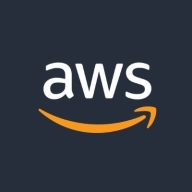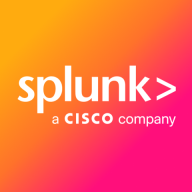

Splunk Observability Cloud and AWS X-Ray compete in observability and performance monitoring solutions. Splunk offers a comprehensive approach, whereas AWS X-Ray focuses on real-time tracing and debugging.
Features:Splunk Observability Cloud provides extensive features like log searching, custom dashboards, and data integration, allowing for robust security and performance monitoring. Its standout ability is cloud environment integration. AWS X-Ray specializes in debugging with a strong emphasis on service maps and trace metrics, allowing for efficient performance issue analysis.
Room for Improvement:Splunk faces criticism for high costs and complex configurations, with users wanting better system integrations and customization options, as well as improved documentation and automated discovery features. AWS X-Ray needs enhanced trace configuration, cost reduction, and broader service support. A more straightforward implementation process and user interface design are also sought by its users.
Ease of Deployment and Customer Service:Splunk offers various deployment options, including on-premises and cloud solutions, providing flexibility but often needing technical support due to complexity. Its customer service is supportive, though response times vary. AWS X-Ray, primarily cloud-based, offers a simpler deployment process, focusing on easy scaling, although its support practices continue to evolve to meet customer expectations.
Pricing and ROI:Splunk is perceived as expensive, with costs based on data volume and potential escalation with additional licensing, but offers a significant ROI through enhanced visibility and efficiency. AWS X-Ray, although noted for costliness, provides scalable pricing benefits for heavy use, though transitioning from small to large enterprises can be challenging. ROI is evident in both solutions, but choice may depend on budget and feature needs.
| Product | Market Share (%) |
|---|---|
| Splunk Observability Cloud | 2.0% |
| AWS X-Ray | 2.7% |
| Other | 95.3% |


| Company Size | Count |
|---|---|
| Small Business | 8 |
| Large Enterprise | 3 |
| Company Size | Count |
|---|---|
| Small Business | 20 |
| Midsize Enterprise | 10 |
| Large Enterprise | 43 |
AWS X-Ray is a powerful debugging and performance analysis tool offered by Amazon Web Services. It allows developers to trace requests made to their applications and identify bottlenecks and issues.
With X-Ray, developers can visualize the entire request flow and pinpoint the exact location where errors occur. It provides detailed insights into the performance of individual components and helps optimize the overall application performance.
X-Ray integrates seamlessly with other AWS services, making it easy to trace requests across different services and identify dependencies. It also offers a comprehensive set of APIs and SDKs, enabling developers to instrument their applications and capture valuable data for analysis. With its user-friendly interface and powerful features, AWS X-Ray is a valuable tool for developers looking to improve the performance and reliability of their applications.
Splunk Observability Cloud offers sophisticated log searching, data integration, and customizable dashboards. With rapid deployment and ease of use, this cloud service enhances monitoring capabilities across IT infrastructures for comprehensive end-to-end visibility.
Focused on enhancing performance management and security, Splunk Observability Cloud supports environments through its data visualization and analysis tools. Users appreciate its robust application performance monitoring and troubleshooting insights. However, improvements in integrations, interface customization, scalability, and automation are needed. Users find value in its capabilities for infrastructure and network monitoring, as well as log analytics, albeit cost considerations and better documentation are desired. Enhancements in real-time monitoring and network protection are also noted as areas for development.
What are the key features?In industries, Splunk Observability Cloud is implemented for security management by analyzing logs from detection systems, offering real-time alerts and troubleshooting for cloud-native applications. It is leveraged for machine data analysis, improving infrastructure visibility and supporting network and application performance management efforts.
We monitor all Application Performance Monitoring (APM) and Observability reviews to prevent fraudulent reviews and keep review quality high. We do not post reviews by company employees or direct competitors. We validate each review for authenticity via cross-reference with LinkedIn, and personal follow-up with the reviewer when necessary.